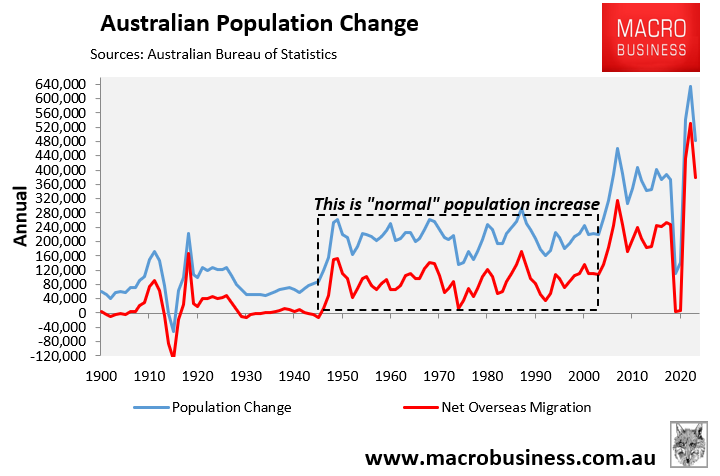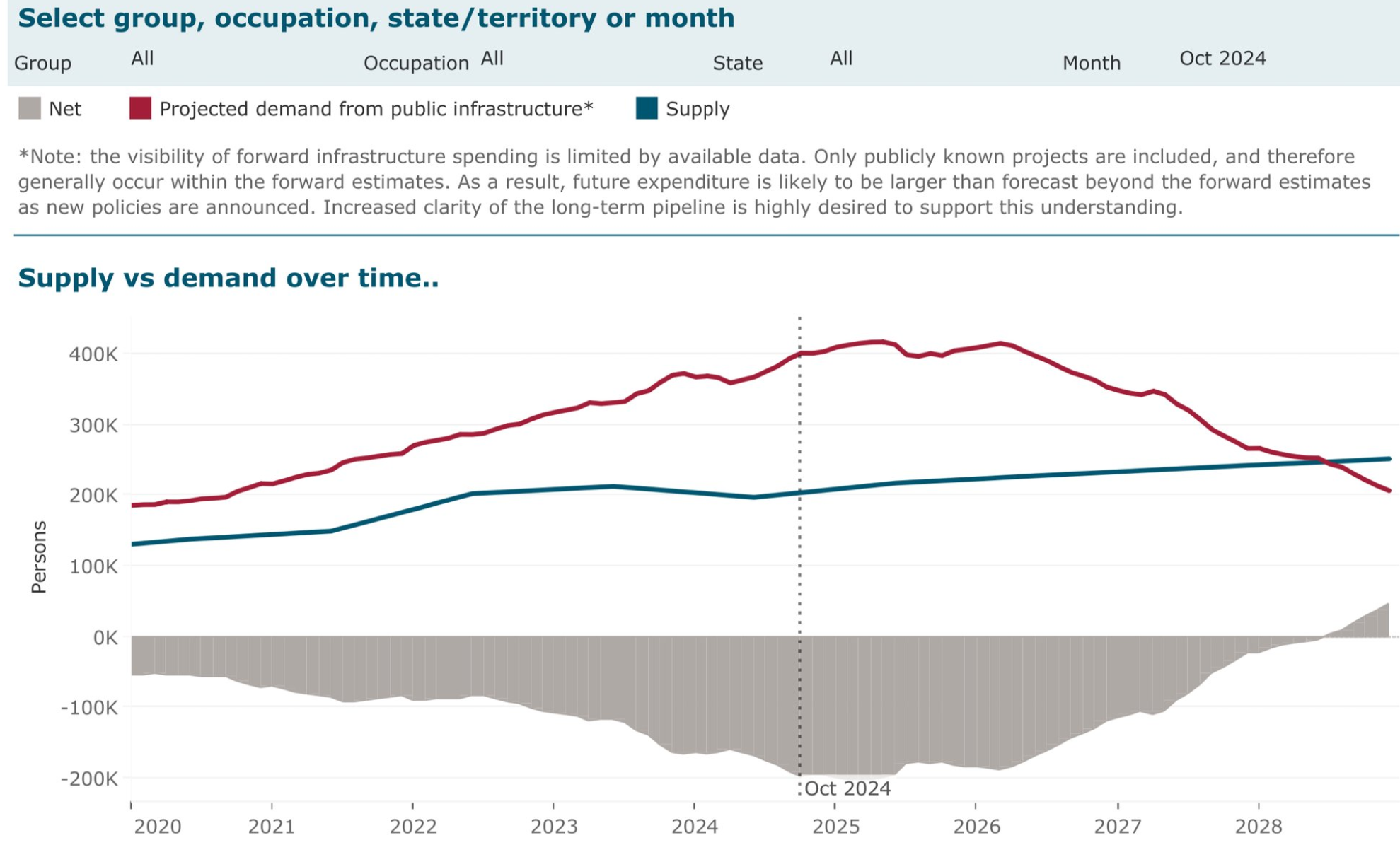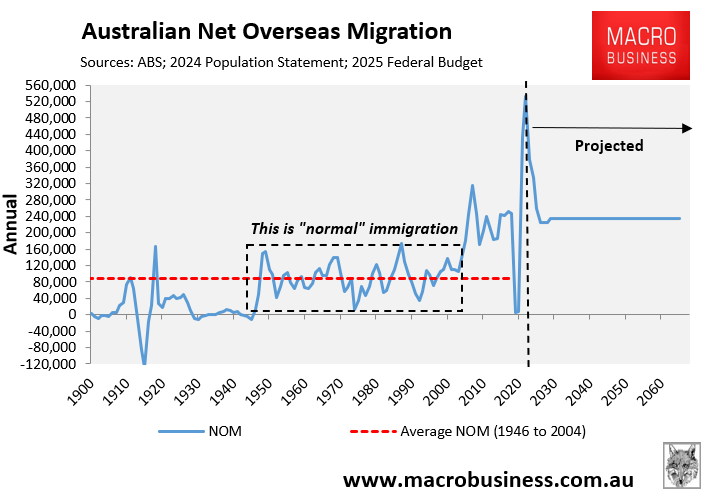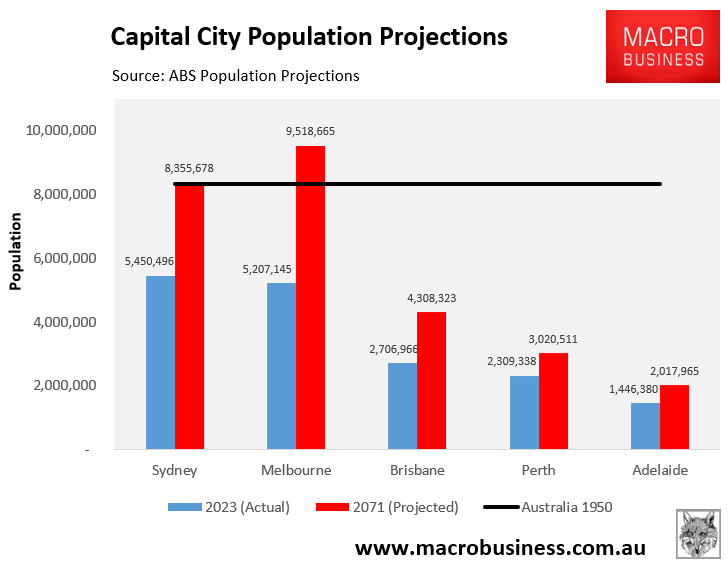Let’s take a walk down memory lane.
The date is 13 August 2019, six months before the COVID-19 pandemic arrived in Australia.
Infrastructure Australia’s (IA) Australian Infrastructure Audit was released, warning that $40 billion a year of infrastructure investment is needed to catch up with Australia’s voracious population growth. Otherwise, productivity and living standards will suffer:
Australia needs to commit to spending $200 billion every five years on a range of infrastructure projects if it wants to keep pace with population growth.
Infrastructure Australia has warned a new wave of investment is needed to ensure roads and public transport, schools, water, electricity and health services support people’s quality of life and economic productivity.
The most visible example of the impact of poor infrastructure is the increasingly congested roads and crowded public transport in our biggest cities…
At the moment, this congestion costs the economy $19 billion a year but if no more is spent on upgrades, that will double to nearly $40 billion by 2031.
Less visible but just as frustrating to people are hospitals and schools that are ageing or reaching capacity, overcrowded parks and city green spaces, ageing water pipes, and the quality of services like the NBN…
The report notes that migration is a key driver of Australia’s above average population growth.
IA also warned that Sydney and Melbourne risked grinding to a standstill as infrastructure struggled:
The huge pipeline of road and rail projects across Sydney and Melbourne, both underway and planned, will not prevent the cities becoming paralysed with congestion by 2031, with the cost of lost productivity due to gridlock set to double over the next 12 years to $38.8 billion.
An Infrastructure Australia audit of the country’s requirements in areas from roads to urban water systems found almost two-thirds of the burden would be borne by Sydney and Melbourne, where even the cost of overcrowding on public transport is expected to grow five-fold to $837 million a year.
An unexpected lift in the nation’s population, concentrated in the major cities of Sydney, Melbourne, Brisbane and Perth, was straining everything from crowding on buses to the supply of schools on the urban fringe, the agency found.
Travel delays on some of the main roads in the two biggest cities would blow out by more than an hour in some cases…
Now fast forward to May 2025. According to the Australian Bureau of Statistics’ (ABS) population clock, the nation’s population has ballooned by 2.2 million (roughly a Perth) since August 2019, courtesy of record net overseas migration:

IA’s Public Infrastructure Workforce Supply Dashboard shows that Australia has a critical shortage of workers to meet the nation’s infrastructure needs:

Independent economist Tarric Brooker summed up the farce neatly on Twitter (X):
Australian Government: We’re pursuing high levels of migration
Infrastructure Australia (also the Australian Government): We don’t have enough supply of skilled workers to produce the infrastructure approved
Narrator: Which is significantly below the infrastructure required.
Meanwhile, the March federal budget projected that Australia’s population would grow by 1.8 million people over the next five years, with 1.4 million of them forecast to settle in Victoria (544,000), New South Wales (486,000), and Queensland (412,000).

Source: March 2025 Federal Budget
The longer-term outlook is even worse, with the Centre for Population projecting that Australia’s population will balloon by 13.5 million people over the next 40 years:

Source: December 2024 Population Statement (Centre for Population)
This 13.5 million projected population increase will be driven by permanently high net overseas migration of 235,000 annually, which is more than double the 90,000 average net migration in the 60 years following World War II.

This 13.5 million projected population increase is equivalent to adding another Sydney, Melbourne, and Brisbane to the nation’s current population in only 40 years.
By extension, all of the infrastructure and housing in these three cities would need to be replicated in only 40 years to prevent living standards and productivity from declining. That is an impossible task.
Australia’s major capitals will also necessarily transform into crowded megacities:

The only way to prevent this outcome is to significantly cut immigration and stabilise the population.
Because even Infrastructure Australia acknowledges that we cannot build our way out of this predicament.

